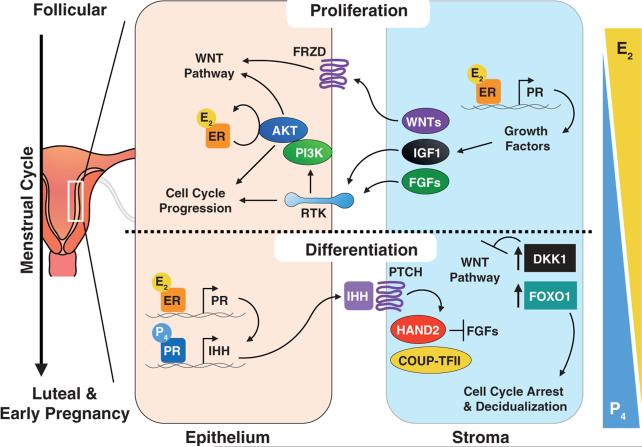Figure 3. Epithelial-stromal interactions regulating proliferation and differentiation of the uterine endometrium.
The uterine endometrium is stylized in this figure, with predominant signaling pathways represented during the proliferative follicular phase of the menstrual cycle (above dotted line) and during the differentiation of the luteal phase (below dotted line). Arrows on the right indicate relative concentrations of circulating steroid hormone levels. During the follicular phase, the predominant steroid, estrogen (E2; estradiol), acts through its receptor (ER; expressed in epithelium and stroma) to activate the PI3K/Akt pathway and promote inhibitory phosphorylation of GSK-3β, leading to activation of Wnt signaling, regulation of cell cycle proteins and enhanced cell proliferation. E2 also can induce the expression of critical growth factors such as Wnt ligands, IGF1, and FGFs that are secreted by the epithelia and stroma, and which bind to epithelial membrane receptors (i.e. receptor tyrosine kinases, RTKs) to support proliferation. During the luteal phase and early pregnancy, progesterone (P4), as the predominant hormone, antagonizes E2-induced proliferation and promotes differentiation of the glandular epithelium. P4 acts through its receptor (PR) to induce expression of indian hedgehog (IHH) within the epithelium, which binds to Patched (PTCH) on the surface of the stromal cells and through the COUP-TFII and Hand2 complex inhibits expression of FGFs. In addition, P4 also appears to induce the stromal expression of the Wnt signaling antagonist, dickkopf-related protein 1 (DKK1) and the transcription factor, FOXO1, which leads to inhibition of Wnt signaling, inhibition of cell cycle progression, and expression of decidualization-specific genes for stromal cell differentiation. Frequent alterations in endometrial cancer include altered ER/PR expression, PTEN loss of function, activation of PI3K/AKT signaling, and mutations to FGFR; these events are predicted to impact PR actions in the context of tumorigenesis.

